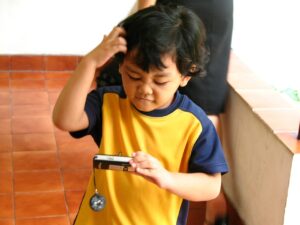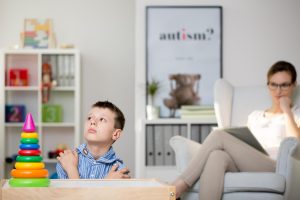ADHD Treatment
ADHD Treatment – There Are Several Good Options
We’ve spent many years treating children and adults with ADHD. It’s heartwarming to see the improvement in a person when everything falls into place. It’s not instant. There are steps along the way. The right diagnosis. Working with parents, family, teachers, and spouses. Finding the best medication. Balancing therapy and medication. Check for other diagnoses and medical conditions hiding behind the ADHD. Usually someone with ADHD want to do well, wants to get things done. but just can’t do it. Get all the parts in place and a while later life is in a better place. They realize that they have more control over themselves and pursuing their daily activities. And, it often comes as a surprise. The treatment doesn’t change a devil into an angel, it evolves a mischievous rascal into putting energy toward becoming a true competitor in life.
A Reader Asks:
With non-controlled drugs available for ADHD why does anyone use any of the stimulants?
Most parents who come with children with ADHD and many adults who present with ADHD ask this same question initially, and it’s a good question. Our Neuroscience Research & Development Consultancy website gets a lot of queries on this topic. As part of our answer we include the next few paragraphs below. The answer is that usually it’s one of the stimulants that works much better and much more quickly than the available non-stimulant medications. When there’s a family of medications that’s known to usually work better, it makes sense to try a few medications in this family of compounds first. If for some reason none of them work well or if they cause problematic side effects, then the next medications to try would be the non-stimulants, medications such as viloxazine (Sebree®) or atomoxetine (Strattera® or generic atomoxetine).
ADHD Treatment – Balancing Practicality Against Biased Opinion
Further down the page we make the case as well as we can that the most well studied medications, with the most well-known safety profiles, are the stimulants. They’ve been in use since the 1950s, and they’re the best tried-and-true medications for ADHD. It is true that these medications are DEA Schedule II. And it’s also true that in some instances they can be abused. But for treating children with ADHD, the stimulants are rarely abused. And the DEA scheduling shouldn’t matter for appropriately handled medications. The focus should be on what works best with the fewest side effects. The medications that are FDA-approved for ADHD that are not Schedule II are considered by many ADHD physicians as second-line treatments to be used if, for some reason, the stimulants cannot be used.
ADHD Treatment – When Not To Use Stimulants
There are times when the stimulants shouldn’t be used. We discuss this topic more fully below, but in short for now… If none of the stimulant medications can be used because they don’t help enough or because they cause too many side effects, then of course it makes sense to avoid them. There are several FDA-approved medications for ADHD that aren’t stimulants to try next. They’re medicines that are taken daily (just as the stimulants are) but the non-stimulant medications take several weeks, up to four to six weeks, to begin to help.
The Medical Letter on Drugs and Therapeutics on One of the Newest of These Non-Stimulant Medications
The Medical Letter on Drugs and Therapeutics is a highly respected medical information source that has been published twice-monthly since 1958. One huge benefit of The Medical Letter is that It’s independent of any pharmaceutical industry influence. It accepts no advertising and has a strict policy that no reprints will be sold to the pharmaceutical industry. It’s supported by subscriptions. In the June 28, 2021, issue The Medical Letter reviewed the latest FDA-approved non-stimulant. (The full Medical Letter reference is at the bottom of this page.) The Medical Letter’s conclusion is below. The conclusion ends with the statement, “Stimulants are preferred for most patients.”
The Medical Letter on Drugs and Therapeutics Discussing Viloxazine
“Standard Treatment — Stimulants such as amphetamines and methylphenidate are the drugs of choice for treatment of ADHD.” “Nonstimulants such as atomoxetine and the alpha2-agonists clonidine and guanfacine are not controlled substances. They are less effective than stimulants but may be preferred for school-age children because they cause fewer adverse effects.”
“Conclusion — In short-term clinical trials, the selective norepinephrine reuptake inhibitor viloxazine (Qelbree) was more effective than placebo for treatment of ADHD in children 6-17 years old. As with atomoxetine (Strattera, and generics), the other selective norepinephrine reuptake inhibitor approved for treatment of ADHD, somnolence, increases in heart rate and blood pressure, weight loss or failure to gain weight, and suicidal ideation may occur with its use. How viloxazine compares in efficacy with atomoxetine or other nonstimulants for treatment of ADHD is unknown. Stimulants are preferred for most patients.
ADHD Treatment Usually Requires a Medication
It’s also true that many parents don’t want to use a medication to treat their child’s ADHD. Similarly, many adults with ADHD don’t want to take a pill every day. But trying to treat ADHD yet avoid taking a medication is usually a mistake. The medications that work to treat ADHD, when you find the right one, will typically help remarkably well with just a few side effects.
How the Right Medication Can Help with ADHD Treatment
Major ADHD help number one, the right medication will lessen the driven over-activity. In addition, it will help lessen the dilemma of acting before thinking (rather than thinking before acting, the usual best way). And finally, the right medication can help improve clear thinking and focus. That is, for her to do the things now that she wants to do and not daydream or waste time inadvertently doing things that don’t matter to her. When you find the correct medication that works it’s likely that she’ll be more able to make choices to help herself and to succeed more often. Her life will be better in school, at work, and at home with family.

Finding the Best Right Medication for ADHD Treatment
A child or person is struggling with tasks that those around him seem to find easy to do. The question of ADHD arises, the evaluation is done, and the diagnosis is made. Then the challenge is to find the best medication for him, for her, for yourself. The good news is that there are several medications in different medicine families that are effective for treating ADHD. What matters, and matters quite a lot, is that you work with your physician to find the best right medication. Medication for ADHD is not “one size fits all”. And we emphasize not just a right medication but the best right medication. Some medications will help a lot while others will help just a little or not help at all. Some will have only a few side effects while others might have side effects that make you feel awful.
Your Physician Will Help Find the Best Medication More Quickly
You and your physician need to find the medication for you that has the best balance of helping and with the fewest side effects. But here’s the dilemma: There’s no way to tell for sure what will happen before trying a medication. If your physician does not usually treat people with ADHD, hopefully he can refer you to a physician with lots of experience. A skilled clinician who knows what she’s doing, and who’s working hard to help you, can find this best right medication for you much more quickly.
How Much Does a Medication Help and What Are Its Side Effects?
Once you’re trying a new medication, the easy way to learn if and how much it helps is to ask trusted people around you. Here’s the dilemma. Your brain is your bodily organ that needs the medication. But your brain is also your bodily organ that needs to decide if the medication works. When your brain is trying hard to work how can it, at the same time, know how well a new medication is working. It’s like looking at yourself in a mirror and judging yourself fairly. It’s hard to do.
Trusted Advice from Trusted People
First you need to identify for yourself a trusted relative and/or a trusted close friend. Explain the situation and have them work with you to check out your medication’s benefits and side effects. “Trusted” is an important word here. Someone who is on your side. As the days click by and you’re taking the new medication, ask each of them what they think. For a child, it’s valuable for parents also to go to the child’s school and find out what the teachers are seeing.
Which Medication Works Best and Most Often for ADHD Treatment?
There are several medications that, since the 1950s, have been found to be the medications that most often work best for ADHD. The common name for all these medications is “stimulants” because they are stimulants for people who don’t have ADHD. They don’t work as stimulants for people with ADHD. For people with ADHD they usually make thinking more clear and slow and calm behavior. When started, these medications start working to treat ADHD in a day or two, or within a few days.
How Do These Medications Work?
These medications allow those brain nerve circuits to work better that do the clear thinking and that keep everything, including behavior, under control. And they calm the circuits that push hard to drive activity and action before thinking. They’re safe when given and watched by a physician who knows them and who follows what’s happening with your child. But these medications are not always safe. One has to take them seriously and use them with care.
Which ADHD Treatment Medications Are These?
The typical medications in this group are methylphenidate (e.g., Ritalin®, Concerta®), dextroamphetamine (e.g., Dexedrine®), and the dextroamphetamine/amphetamine combination (Adderall®). All are available as (hopefully less expensive) generics.
Only Certain Physicians Can Write for these Medications
All of the medications in this group are prescription medications that are DEA Schedule II controlled substances. A licensed medical physician has to write the prescription for them. And, not all licensed physicians are willing to work with these medications. Physicians who know these medications well and who regularly treat people with ADHD will write for the prescriptions if they are appropriate.
Mostly, These Medications Are Safe
These medications are mostly safe when used with care and when you’re working with a physician who knows these medications and is experienced in treating ADHD. If the medication you finally choose works well and the side effects are minimal, it can be used for a long time, for years. You might be able to use the same medication for a lifetime if it’s needed for a lifetime. If a medication you try doesn’t work or has problem side effects, stop it and find a different medication or a medication of a different type. Continue your search until you find the one that will work.
CHADD Links (CHADD is Children and Adults with Attention-Deficit/Hyperactivity Disorder.)
Here is a link to a CHADD site discussing medication management for children with ADHD with a long section on use of, benefits of, side effects of, and risks of the stimulant family of medications:
Here is a link to another CHADD site for these same topics for adults with ADHD:
Other Types of ADHD Treatment Medication
There are ADHD medications of other types to try if none of the medications discussed above help enough or have too many side effects. These other medications are not stimulants, are taken daily, and take several weeks to work. They might take as long as four to six weeks to start working.
atomoxetine and viloxazine
Two of these non-stimulant, take-longer-to-start-working medications are atomoxetine (Strattera®) and viloxazine (Qelbree®). They’re meant to work in the same way as the stimulants, that is, to boost activity in the brain’s circuits that support clear thinking and that keep everything under control. And, to calm the circuitry driving the activity and action taking place before thinking. While these two medications might be thought of as second-choice medications after the stimulants, some people do find that they are effective and have tolerable side effects. The atomoxetine is FDA-approved for ADHD in children, teenagers, and adults and viloxazine is FDA-approved for children and adolescents ages 6 to 17 (but might also work well in adults).
venlafaxine and desvenlafaxine
This next different family of medications includes venlafaxine (Effexor®) and desvenlafaxine (Pristiq®). Physicians and medical scientists have less information about using venlafaxine for ADHD. And even less information on desvenlafaxine. So, more physicians have experience with the stimulants, atomoxetine, and viloxazine, and fewer physicians have much experience with venlafaxine and desvenlafaxine. These two medications are effective for some people with ADHD, however, so ask your physicians about them. If the other medications listed above aren’t effective for you or cause problem side effects, maybe it’s time to try venlafaxine or desvenlafaxine.
clonidine and guanfacine
This is another completely different type of medication that sometimes helps when treating ADHD. These two medications were originally developed for treating high blood pressure. If a person with ADHD has intolerable side effects with the other ADHD medications discussed above, your physician might suggest you try one of these. Examples are clonidine (Catapres®, Kapvay®) and guanfacine (Tenex®, Intuniv®). They do lower blood pressure and affect heart rate so these vital signs need to be checked regularly while taking these medications. They can also make an otherwise energy-filled child or teenager feel slow and tired.

Be Super Cautious Regarding “Herbs” and “Natural” Products
There are many websites and stores with a marketing “hard-sell” that one does not need real medications to treat ADHD. This is false information and bad information. The natural supplement and herbal market is the wild west, completely not inspected and not regulated. It’s a jungle of a few quality vitamins and many, many bogus substances. Some of the popular commercial hard-sell pitches are for ginko biloba, bacopa monnieri, caffeine (good grief, just have a cup of coffee or tea), L-theanine, rhodiola rosea, phosphatidylserine, omega-3 fish oil (here again, just eat some fish), alpha GPC, huperzine A, L-tyrosine, 5-HTP, and GABA. Be super cautious, and buyer beware!
ADHD Treatment Is Often Really Successful
Children with ADHD often do much, much better in school and with family and friends when taking one of these good medications for ADHD. Adults with ADHD are more successful at work and have a better family life with their spouse and children when taking the right medication that works well.

Therapy – The Essential Non-Medication Part of ADHD Treatment
Along with finding and taking the best right medication, it’s important to become educated about ADHD and about yourself. In psychotherapy or other types of supportive help you can learn about ADHD and how it affects you. Those who have ADHD, whether children, teenagers, or adults, need to be able to work with a good person they trust. Really. It’s true. Having ADHD is not easy. Living with it and getting it treated can be really frustrating and confusing. Look at it this way. This ADHD person is trying to think clearly and get it right. But thinking clearly is the problem. If, at the start, the person could just think clearly they would not need the medication or the therapy. The journey through the jungle goes better with a guide.
Many Non-Medication Choices for ADHD Treatment
There are many choices for this essential therapeutic help. Some examples are:
- Behavior therapy
- Interpersonal therapy
- Family therapy
- Marital therapy (for parents or for adults)
- Educational approaches, training on specific skills or situations, like:
- Stress management
- Test taking in school
- Dating relationships
- Group therapy
- Parenting skills training (raising a child with ADHD, while eventually rewarding, is a fast-moving challenge day-to-day)
Therapy is essential. A physician cannot just give a child or adult a pill and expect everything will go well. It doesn’t. Get into therapy, the therapy of your choice with the therapist of your choice.

One Final Word of ADHD Treatment Caution
People who try to treat ADHD without using any medications are making a huge mistake. Whether it’s your ADHD or your child’s, avoiding a medication altogether usually increases the frustration level for everyone. Yes, therapy has an essential role. One cannot throw pill at a person and expect all to go well. But at the same time, therapy without a medication is robbing the person of the best chance she has of having life go well. We know you’ll read many opinions to the contrary, but we assure you that they are complete boloney.
Below are two more links to expand on this topic of therapies for ADHD:
CHADD on Treatment of ADHD
CHADD Treatment Overview for Parents
(CHADD is Children and Adults with Attention-Deficit/Hyperactivity Disorder.)
Literature Reference for The Medical Letter on Drugs and Therapeutics
Viloxazine ER (Qelbree) for ADHD, The Medical Letter on Drugs and Therapeutics, Vol. 63, Issue #1627, June 28, 2021, p. 98 – 100.


